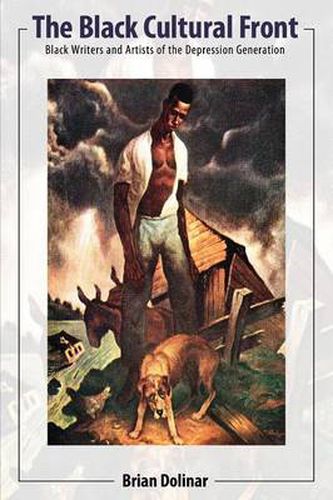Readings Newsletter
Become a Readings Member to make your shopping experience even easier.
Sign in or sign up for free!
You’re not far away from qualifying for FREE standard shipping within Australia
You’ve qualified for FREE standard shipping within Australia
The cart is loading…






This title is printed to order. This book may have been self-published. If so, we cannot guarantee the quality of the content. In the main most books will have gone through the editing process however some may not. We therefore suggest that you be aware of this before ordering this book. If in doubt check either the author or publisher’s details as we are unable to accept any returns unless they are faulty. Please contact us if you have any questions.
The Black Cultural Front describes how the social and political movements that grew out of the Depression facilitated the left turn of several African American artists and writers. The Communist-led John Reed Clubs brought together black and white writers in writing collectives. The Congress of Industrial Organizations’s effort to recruit black workers inspired growing interest in the labor movement. One of the most concerted efforts was made by the National Negro Congress (NNC), a coalition of civil rights and labor organizations, which held cultural panels at its national conferences, fought segregation in the culture industries, promoted cultural education, and involved writers and artists in staging mass rallies during World War II.
The formation of a black cultural front is examined by looking at the works of poet Langston Hughes, novelist Chester Himes, and cartoonist Ollie Harrington. While none of them were card-carrying members of the Communist Party, they all participated in the Left at one point in their careers. Interestingly, they all turned to creating popular culture in order to reach the black masses who were captivated by the movies, radio, newspapers, and detective novels. There are chapters on the Hughes’
Simple
stories, Himes’ detective fiction, and Harrington’s
Bootsie
cartoons.
Collectively, the experience of these three figures contributes to the story of a
long
movement for African American freedom that flourished during the 1930s, 1940s, and 1950s. Yet this book also stresses the impact that McCarthyism had on dismantling the Black Left and how it affected each individual involved. Each was radicalized at a different moment and for different reasons. Each suffered for their past allegiances, whether fleeing to the haven of the
Black Bank
in Paris, or staying home and facing the House Un-American Activities Committee (HUAC). Yet the lasting influence of the Depression in their work was evident for the rest of their lives.
$9.00 standard shipping within Australia
FREE standard shipping within Australia for orders over $100.00
Express & International shipping calculated at checkout
This title is printed to order. This book may have been self-published. If so, we cannot guarantee the quality of the content. In the main most books will have gone through the editing process however some may not. We therefore suggest that you be aware of this before ordering this book. If in doubt check either the author or publisher’s details as we are unable to accept any returns unless they are faulty. Please contact us if you have any questions.
The Black Cultural Front describes how the social and political movements that grew out of the Depression facilitated the left turn of several African American artists and writers. The Communist-led John Reed Clubs brought together black and white writers in writing collectives. The Congress of Industrial Organizations’s effort to recruit black workers inspired growing interest in the labor movement. One of the most concerted efforts was made by the National Negro Congress (NNC), a coalition of civil rights and labor organizations, which held cultural panels at its national conferences, fought segregation in the culture industries, promoted cultural education, and involved writers and artists in staging mass rallies during World War II.
The formation of a black cultural front is examined by looking at the works of poet Langston Hughes, novelist Chester Himes, and cartoonist Ollie Harrington. While none of them were card-carrying members of the Communist Party, they all participated in the Left at one point in their careers. Interestingly, they all turned to creating popular culture in order to reach the black masses who were captivated by the movies, radio, newspapers, and detective novels. There are chapters on the Hughes’
Simple
stories, Himes’ detective fiction, and Harrington’s
Bootsie
cartoons.
Collectively, the experience of these three figures contributes to the story of a
long
movement for African American freedom that flourished during the 1930s, 1940s, and 1950s. Yet this book also stresses the impact that McCarthyism had on dismantling the Black Left and how it affected each individual involved. Each was radicalized at a different moment and for different reasons. Each suffered for their past allegiances, whether fleeing to the haven of the
Black Bank
in Paris, or staying home and facing the House Un-American Activities Committee (HUAC). Yet the lasting influence of the Depression in their work was evident for the rest of their lives.